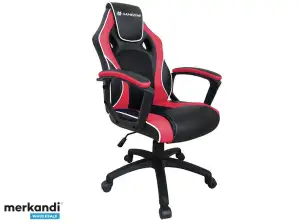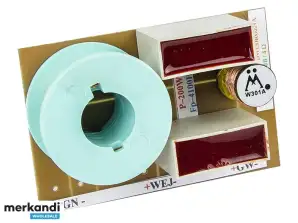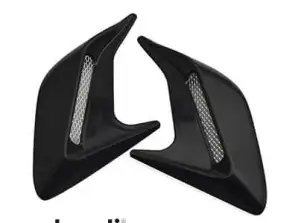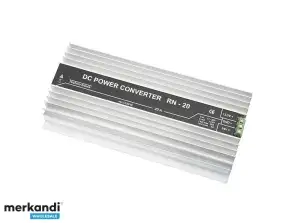Sign up for FREE Newsletter - stay up to date!
Don't miss the daily updates on new products and news on Merkandi. Receive discount code for registration.
Professional, dual-channel, compact microprocessor-controlled charger for Li-ion batteries in sizes 18650 and others. Key features: - Microprocessor-controlled three-stage charging process TC/CC/CV - Two independent charging channels - Powered by any micro USB charger or from a computer's USB port (min. 0.5A) - Small dimensions - easy to carry - Function for reactivation of deeply discharged cells - Safeguards: short-circuit, thermal, against reverse polarity Hidden in its small casing is a fully professional microprocessor-controlled charger with a three-stage charging process TC/CC/CV. It charges 1-2 Li-ion cells 3.6 / 3.7V with any capacity in sizes 10440, 14500, 14650, 16340, 17500, 17670, 18350, 18500, 18650, 18700. It is also possible to charge one battery in sizes 20700, 21700 - only unprotected. How does the TC/CC/CV charging method work? It's a three-stage charging process for Li-ion cells that ensures the maintenance of the cell in good condition by charging it with the appropriate current at each stage and ending the charging process at the right moment. The individual stages of the TC/CC/CV process are: TC Phase: cells discharged below 2.85V are 'awakened' with a lower current. CC Phase: after reaching 2.85V, the cell is charged with a constant current of 0.5A or 0.25A (depending on the power source used). CV Phase: when the cell is nearly fully charged, the charger switches to charging with decreasing current until a voltage of 4.2V is reached on the cell. Upon reaching 4.2V, the charging process is completed - the battery is fully charged. Batteries with a voltage of 4.1V or higher are considered fully charged by the charger. To recharge such a battery to full capacity, it must be placed in the charger before powering it on. Batteries that remain charged in the charger will undergo a natural self-discharge process. Charging will resume when the voltage on the battery drops below 4.1V. The Xtar MC2 charger has a function for reactivating deeply discharged cells and cells with 0V voltage. Many chargers on the market are unable to charge such batteries. Here comes the Xtar MC2 charger to the rescue, allowing in many cases the 'rescue' of such cells. Just insert a deeply discharged battery into the MC2 charger, like during normal charging - the charger detects the discharged cell and attempts to reactivate it. Warning! Cells discharged below a certain level may suffer irreversible damage, and their reactivation may be impossible. Avoid too deep discharge of Li-ion batteries - it may lead to significant reduction in their durability and capacity or render them completely inoperable. Chargers from other manufacturers may significantly raise the temperature of charged cells during charging. Excessive heating of the cells can cause them to wear out faster. In designing the MC2 charger, the company Xtar has gone a step further than the competition by solving this issue in a simple way: an external power supply is used. This means that the temperature of the battery being charged in the MC2 will rise by at most 15 degrees. Included with the Xtar MC2 charger are a micro USB cable and a protective case for transporting the charger. The power adapter is not included. To power the charger, any charger with a micro USB cable, e.g., from a phone, or a computer with an available USB port is sufficient. The recommended power of the charger is 1A (1000mA).








Don't miss the daily updates on new products and news on Merkandi. Receive discount code for registration.